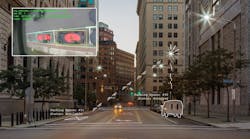Lighting is a critical element of industrial safety, and well-lighted facilities are key to safety and productivity. The petrochemical (oil and gas) industry spends millions of dollars on lighting. In contrast, in many large industrial facilities, lighting is seldom considered to be a key safety consideration, even though safety professionals are continually focused on keeping the workers safe.
One of the reasons for this dilemma is that the conventional lighting has limitations in performance and therefore in its interpretation by the end user. This has potentially serious implications in industries where employees are exposed to hazardous chemicals and where accidents can be especially severe. This risk extends to employees working in food industries, or with cleaning solutions, and in manufacturing industries and service establishments.
Eyewash and safety shower facilities
Eyewashes and safety showers were developed, in response to the increased use of hazardous chemicals, as emergency systems to protect an employee from injury in case of contact with such chemicals, chemical compounds or fire.
Because the first few seconds after exposure to a chemical are critical, eyewash and safety shower facilities must be within ten or fewer seconds of an employee’s reach. If the chemical is left in the eye or on the body for even seconds too long, permanent scarring may result, so the affected area(s) must be washed thoroughly before the chemical can cause further damage. In the course of an accident it is highly likely that the victim will experience decreased vision and mobility, so it is absolutely essential that the safety shower location is clearly indicated and easily identified during day or night conditions.
Traditional safety shower location lights (incandescent or fluorescent) are limited in providing useful lighting for identification of safety eye wash stations at night, and provide practically no useful signalling during the day, as the safety lighting blends into natural daylight. This is just one usage example where it will be seen that LED lighting could deliver an immediate and valuable benefit during the precious seconds needed to locate the safety shower.
Seven-point lighting profile The performance of safety lighting can be vastly improved by utilising new lighting technologies that are capable of taking into account the human visual system, providing high-quality area illumination both at night and day, as well as optimum night identification of safety showers and other critical safety equipment.We have developed a revolutionary 7-point lighting profile (Fig. 1) and offer the following unique overview of the complex process of integrating the human visual system with artificial industrial illumination and signal lighting.
The Quality of Light Profile shown in Fig. 1 consists of seven measurable points: 1) Color, 2) Candela, 3) Coverage, 4)Configuration, 5) Longevity, 6) Integrity and 7) Human Factor. Human Factor is the biggest part of the “puzzle” because all of the answers for “physiologically” developed lighting are in the eye itself.
A. Human factor
It is important to realise that light is not simply light, as it is being interpreted by a very complex human visual system. The retina, a light-sensitive screen at the back of the eye, has many light receptors that convert light into electrified signals sent to the vision centres of the brain. Because of their shapes the two major categories of light receptors are called cones and rods. The sensitivity of the human eye varies at different light levels and, while cones are responsible for day vision, rods play an important role in night-time vision.
The very central part of the retina, the fovea, contains only cones while the rest of the retina contains both rods and cones. Cones are active at high light levels and are most densely situated in the central part of the field of view, so when we look directly at an object, we are using our cone receptors.
The rods are responsible for human vision at low light levels, and are prevalent in the peripheral field of view, away from our direct line of sight. As shown in Fig. 2 the spectral response of the cones corresponds to the photopic V(λ) sensitivity curve. As the light levels decrease, the cones become less active, the rods become active and spectral sensitivity gradually switches towards the scotopic response curve.
The spectral sensitivity of the human eye at photopic light levels (day vision) has a maximum wavelength of 555nm as described by the International Commission on Illumination (CIE). At scotopic light levels this value is located at a lower wavelength of 507nm. Both in theory and in practice, the determination of lamp lumens involves knowing the spectral power distribution (SPD) of the lamp and the visual response of the eye.
Vision scientists have known for most of the twentieth century that in fact the way the eye responds to color is dependent upon the lighting conditions. While it’s widely accepted that cones handle day vision and rods are designed for night vision, up until now lighting manufacturers measuring a lamp’s lumen output have continued to utilise light meters that are calibrated to the eye’s sensitivity to only cone-activated vision (photopic), completely ignoring the effect of rod-activated vision (scotopic). Unfortunately this represents a gross oversimplification of human vision.
This problem is further compounded by the realisation that the V(λ) curve was established from research conducted using the fovea, the central ±1°of the eye’s field of view, while central human vision is at least ±10°. So, if the visual task is off-centre and at a low level of luminance, the fundamental definition of the lumen would not be accurate.
B. Color
In the past it has been widely accepted that under virtually all circumstances where artificial light is used, lighting level calculations could ignore light source color. When calculating such levels in practical design situations, results are based on the lamp’s lumen rating, usually provided by the manufacturer. Calculated values of candelas, lumens, lux or cd/m2 are not dependent upon whether the light source is white, bluish white, yellow or pink.
Research and publications indicating the importance of lamp spectral distribution have been available for many years. Recently, some lighting experts have started to use the term “effective lumens” to define the modified lumen output of a lamp, taking into account the shifting color sensitivity of the eye at low light levels.
For example, HPS lamps have high lumen ratings based on the definition that the lumen is the amount of light as perceived by the eye under photopic conditions. It is not so much that the sodium lamp produces a high output of energy, but rather that its energy peak is near the maximum photopic sensitivity wavelength of the eye (see yellow region in Figure 3). However, because very little energy output of the HPS lamp occurs at wavelengths shorter than the peak, so the effective lumens for scotopic conditions (the V'(λ) curve in Fig. 2) is greatly reduced. Sodium produces very little blue and green light, and therefore its effectiveness under low light levels is drastically reduced. In other words at night, when the light has a true purpose in providing area illumination, the quality of HPS source is rather poor due to very low “effective lumens”.
In contrast if we consider a white light source (for example white LED) with some balanced energy peaks (or even with peaks predominantly in the blue/green regions) it will be seen that the energy output aligns more closely with the peak of the scotopic eye sensitivity curve. The net result is that the effective lumens increase as the light level reduces at night and the eye shifts to a blue/green peak sensitivity.
In summary, under mesopic viewing conditions, yellow sources have reduced effectiveness while blue/green sources have increased effectiveness. We therefore propose the concept of a ratio for determining the true rating of a fixture’s illumination in relation to lumens utilised by the human eye. This could provide a mechanism to determine the true “quality of light,” hence the term quality of light factor (QLF).
From the above discussion it is clear that the strength of the scotopic eye sensitivity of an LED is a number of times higher than that of an HPS source. Therefore the QLF of an LED source should be greater than the QLF of an HPS source and this factor should be rated high while purchasing Safety Lights.
C. Candela
Candela defines the intensity of the light sources, so it relates to fixture optical design that addresses “light focusing” for optimum performance of industrial white lighting and intended application of LED visual signal lights.
E. Configuration
Configuration, in terms of balanced lighting layout with exact positioning of the fixtures (see Fig. 7), is especially important as it results in proper spacing between the stanchion mounts of industrial lights for optimum area illumination; this usually contributes to safety.
F. Longevity
Longevity of the light sources is a direct contributing factor to overall facility safety, because it minimises the need for maintenance personnel to climb the structures for relamping.
G. Integrity
Integrity relates to optimised fixture mechanical (see Fig.6) and electrical design that can be achieved by utilising new LED lighting technologies for developing fixtures with universal input voltage capabilities and much cooler identification temperature ratings.
Best installation practices
Fig. 7 addresses by a way of an example the importance of using the most effective lighting practices for safety lights in hazardous environments.
Some of Dialight’s key principles for applying LED-based fixtures are described using a gas recovery unit as an installation example. Firstly, LED technology gives better directional control of light than is possible with conventional lighting technology. This is important in areas where many railings and straight walkways need to be lit.
Secondly, efficient operation and low installation costs can be achieved with LEDs by spacing the fixtures more widely than with conventional light fixtures. Using this approach, fewer lights are needed to cover a space laterally, thereby reducing energy needs. This also reduces installation time and costs while the LEDs’ long lifespan cuts maintenance to zero.
Also, unlike conventional lights, LED fixtures are designed to retro-fit to multiple alternative fixings like walls or stanchions and can often be used as side-by-side modules to expand an application. Some large users will carry a range of a few dozen types of fixtures to fit different locations, so using such multi-purpose LED fixtures can drastically reduce the amount of inventory to be carried in order to maintain lighting in different situations.
Conclusions
With the introduction of new LED lighting technologies it is now possible to provide an ideal light source designed specially for maximum retinal efficiency of the human eye. For the first time in the Oil and Gas industry a recommendation is made to employ an optimum color and light source that would be compatible with the physiology of the human eye. By understanding the importance of color for the effective functioning of visual signal lights – for example to ensure day and night identification of eyewash stations and other critical safety equipment – and the importance of CRI for optimum performance of industrial white lighting, perhaps we are opening the door to increased safety at Oil and Gas facilities.
There is no doubt that lighting is a critical element of industrial safety. The practical examples mentioned demonstrate how utilisation of new LED lighting technologies in conjunction with the Quality of Light Factor can contribute to safety improvement as well as energy savings.
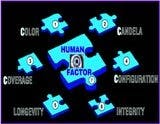
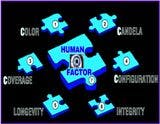
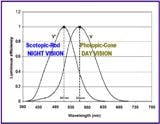
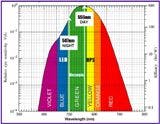

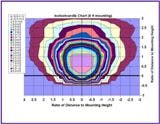

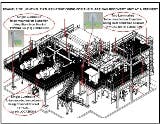

![An installer uses a cell phone to configure a connected lighting system in a Next Generation Lighting Systems (NGLS) living lab. [Photo credit: Image courtesy of Pacific Northwest National Laboratory (PNNL) and NGLS.] An installer uses a cell phone to configure a connected lighting system in a Next Generation Lighting Systems (NGLS) living lab. [Photo credit: Image courtesy of Pacific Northwest National Laboratory (PNNL) and NGLS.]](https://img.ledsmagazine.com/files/base/ebm/leds/image/2020/06/NGLS_Photo_2.5ed693de53fa2.png?auto=format,compress&fit=crop&q=45&h=139&height=139&w=250&width=250)
